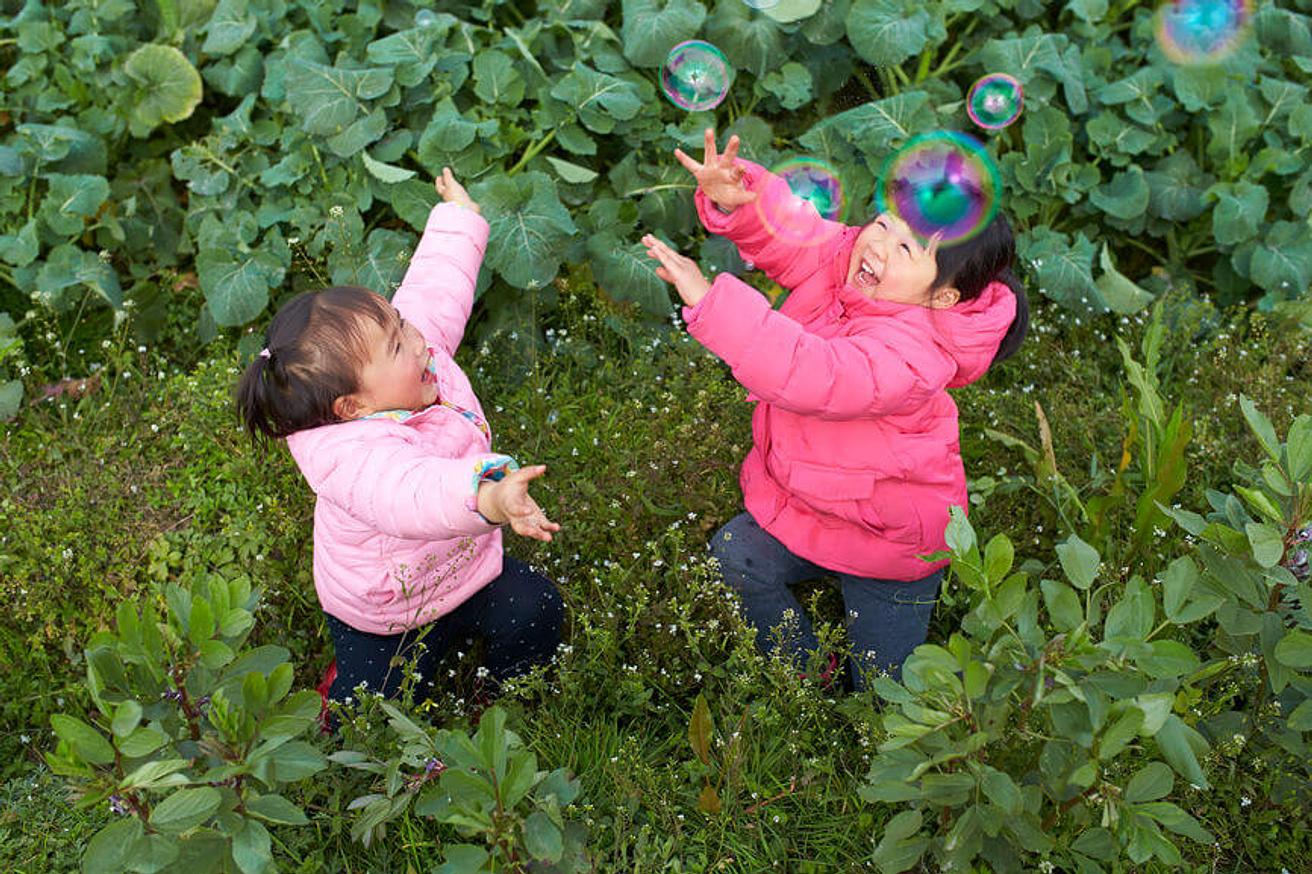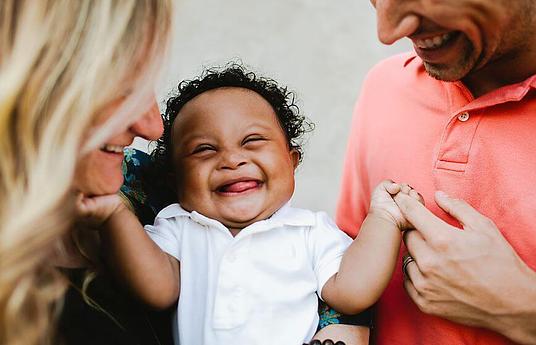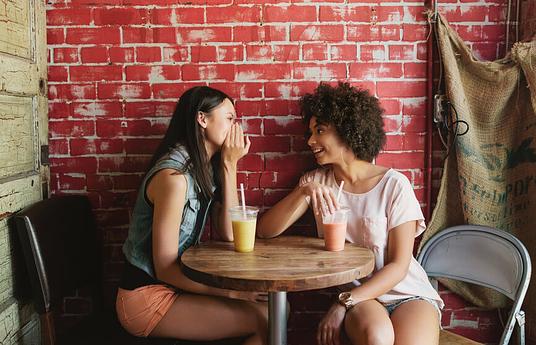Could the schools we’re constructing for our young people be limiting their joy? It certainly seems so, according to Ingrid Fetell Lee, designer and writer who has focused her studies on joy.
‘How can tangible things make us feel intangible things – like joy?’ Fetell Lee asks in her Ted Talk ‘Where Joy Hides and How To Find It’, going on to explain that psychologists describe the experience of joy as, ‘An intense temporary experience of positive emotion, one that makes us smile and laugh and jump up and down. It’s different from happiness which is how we feel over a longer amount of time.’
For Fetell Lee, joy can be created through something as tangible as design principles – in particular color, shape and a feeling of abundance. When conducting a survey into what made people feel joy, Fetell Lee found similarities in their responses. A lot of the images included bright shots of colour, rounded objects like scoops of ice-cream or balloons, and a feeling of abundance, like sprinkles or cherry blossoms.
Joy is directly connected to our fundamental instinct for survival
"
If our surroundings and physical objects can affect our levels of joy, then surely our learning environments should be designed with this in mind? This is a particularly important question to address as we recently discovered through our Global Youth Survey, that 61% of students feel uninspired and unmotivated due to their school environment.
So how can we create learning spaces that empower students and give them the feeling of joy? It turns out there are people already using design principles to help achieve this in schools.
Included in Fetell Lee’s talk, non-profit Publicolor has painted school buildings bright colours to create a more joyous atmosphere for students. ‘Graffiti disappears and kids actually say they feel safer,’ reports Fetell Lee, ‘This links to studies which show that people who work in offices with more colour are more alert, more confident and friendlier than those working in drab spaces.’ Fetell Lee explains this reaction to color can come from evolution, as color suggests life and abundance, and we would have gravitated towards these areas for survival.
It’s not just colour, the shapes of our buildings are affecting our moods and learning capabilities too. Neuroscientists have studied the brain’s reaction to sharp, angular objects and then contrasted this to the reaction to circular objects. The areas in the brain responsible for the presence of anxiety lit up when angular ones were presented which didn’t happen with circular objects.
Fetell Lee describes how one architecture practice redesigned Sandy Hook elementary school in the US, after a mass shooting occurred there, with this design principle in mind. The architects incorporated lots of curves into the design of the building to create an environment that felt safe for the children returning to school after such a terrible incident. The whole building even slightly curved around the entrance of the school in order to make it seem more welcoming as the children approached.
Joy then is bigger than just a frivolous emotion, something that is simply nice to have. It can alter our mood and brain activity which is something all educators should be aware of when trying to instigate learning in their pupils. Fetell Lee concludes, ‘Joy is directly connected to our fundamental instinct for survival,’ and explains that, ‘The drive towards joy is the drive towards life.’

The design of Japanese pre-school, Fuji Kindergarten, clearly shows how joy can be physically built into the walls of our schools. The school is a circular design, with trees growing through the classrooms and the doors to the middle playground space remain open for as much of the year as possible. Not only this, but the children can climb the trees to the rooftop playground on top of the building – a circular never-ending playground.
Through changing the shape of the building to have no edges and to be round, the design feeds into Fetell Lee’s design principles for joy whilst helping ease children into a school atmosphere, by allowing them freedom of movement. The young children are able to wander from classroom to classroom, from inside to outside, following their own instincts and curiosities rather than being literally boxed in inside a classroom.
We can also make classrooms more comfortable experiences for children by simply realizing that the way classrooms are laid out can be changed. As Sir Ken Robinson explains, ‘If you change what you do then you are changing the system. If you are working with thirty kids in a classroom and the door closes behind you, what you do next is the system. So if you sit them down all facing the front, that’s the system, because you are the system to those kids. And if you say let’s get up and move the desks around and try something different, the system is already changing at that point.’
US-based teacher, Kayla Delzer, is an excellent example of how we can take the ordinary classroom and transform it into a more interesting and learning-friendly environment. Delzer created Flexible Seating after noticing how adults in cafes work in different ways and realized that surely children would do so too, if they were given the option.
Delzer went back to her elementary school classroom and got redesigning! Her classroom now includes standing desks, exercise balls, comfortable corners with cushions – however a child might want to work, she’s given them the opportunity to! Delzer created a dynamic environment, keeping the students at the centre of her designs, which allows children to have a choice in how they want to learn that day.

Students can choose where they sit and for how long, with some students needing to move several times a lesson whilst others are happy with staying in one place. The flexible atmosphere of the classroom and abundance of choices gives students a more comfortable and inspiring place to learn.
An abundance of choices is exactly what we should be providing children with, as Anneli Rautiainen, Head of Department for Basic Education and Early Childhood Education in Finland, told us, ‘Learning environments should support learning, which happens everywhere, so children should have the possibility of choosing where they learn the best. One child might learn best in the school playground alone, while someone else might learn better working with a friend in the classroom.’
if we want our young people to succeed and learn to the very best of their ability surely the environments we’re putting them in needs to come into question
"
To take this to a whole school level, educators can learn from the expertise of Danish Learning Space Design Lab, who run workshops for educators to co-create learning spaces together. The sessions focus on giving educators and school staff a space in which to be innovative, playful and to collaborate so that they can improve the learning environments they are currently providing for their school’s students. Autens, the company behind Learning Space Design Lab, believe education should be personalized, co-created and joyful.
Joyous instruments in schools can be helpful too – especially for some of the world’s most vulnerable children. In Ghana, merry-go-rounds have been installed by Empower Playgrounds to simultaneously give children some colorful play equipment whilst enabling them to go further in their studies. The play equipment charges lanterns as the children play on them and these lanterns can then be taken home so children, who are currently living without electricity, can carry on their studies when it’s dark.

This is particularly impactful for these children as most of them have to work with their parents in the afternoon while it’s light, so having time to study is short, as it’s too dark after they finish work. The lanterns provided by Empower Playgrounds help children keep up at school who would otherwise be at risk of falling behind and dropping out.
The merry-go-rounds are bright colours and beautiful, a gift to the community who wouldn’t otherwise be used to having play equipment. It may seem a simple thing, but providing joy through colourful, exciting play equipment can empower communities and help them to place more importance on education – whilst the children also get to have some fun too!
The buildings and environments which surround us are constantly altering our mood and mental state. So, if we want our young people to succeed and learn to the very best of their ability surely the environments we’re putting them in needs to come into question. Through thoughtful, empowering and conscientious design, we can create environments which encourage learning and, more importantly, inspire joy.



